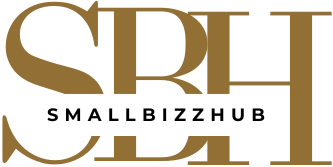Businesses today face an ongoing challenge: should they invest more in content marketing or paid advertising?
Both strategies have their merits, but the right choice depends on a company’s goals, budget, and long-term vision. While content marketing builds organic reach and brand authority, paid ads provide quick visibility and targeted reach.
This article explores the differences, benefits, and ideal investment strategies for each approach.
Understanding Content Marketing
Content marketing involves creating and distributing valuable, relevant content to attract and engage a target audience. This method focuses on long-term brand building and customer relationships. Examples of content marketing include:
- Blog posts and articles
- Infographics
- E-books and whitepapers
- Webinars and podcasts
- Social media content
- Video marketing
Benefits of Content Marketing
- Long-Term ROI: Unlike paid ads, content marketing provides lasting value. A well-optimized blog post can drive traffic for years.
- Brand Authority: High-quality content positions a brand as an industry expert, increasing trust and credibility.
- Organic Search Traffic: SEO-optimized content improves search rankings, bringing in continuous organic traffic without additional ad spend.
- Customer Engagement: Informative and engaging content nurtures leads, fostering deeper connections with potential customers.
- Cost-Effectiveness: While content creation requires time and effort, the long-term cost is lower than constantly running paid campaigns.
Understanding Paid Advertising
Paid advertising, on the other hand, involves paying to promote content, products, or services through platforms like Google Ads, Facebook Ads, LinkedIn Ads, and display advertising. Common types of paid ads include:
- Search engine ads (Google Ads, Bing Ads)
- Social media ads (Facebook, Instagram, LinkedIn, TikTok)
- Display ads (banners, retargeting)
- Video ads (YouTube, social media)
- Sponsored content (native advertising)
Benefits of Paid Advertising
- Immediate Results: Paid ads drive instant traffic, making them ideal for short-term campaigns and promotions.
- Precise Targeting: Ads can be highly targeted based on demographics, interests, behaviors, and location.
- Scalability: Businesses can increase ad spend to reach a broader audience and scale marketing efforts quickly.
- Performance Tracking: Paid ad platforms provide detailed analytics, allowing marketers to track conversions and optimize campaigns in real time.
- Competitive Advantage: Running paid ads helps brands stay visible in competitive industries where organic reach is limited.
Content Marketing vs. Paid Ads: Key Differences
| Aspect | Content Marketing | Paid Advertising |
|---|---|---|
| Timeframe | Long-term strategy | Immediate impact |
| Cost | Lower ongoing cost | Continuous spend required |
| Audience Trust | Builds credibility and trust | Can be seen as intrusive |
| Scalability | Gradual, organic growth | Easily scalable with budget |
| Sustainability | Evergreen content drives long-term traffic | Traffic stops when ads are turned off |
When to Invest More in Content Marketing
Content marketing is ideal when:
- Your goal is to build long-term brand authority.
- You want to improve organic search visibility (SEO).
- You have a limited ad budget but can invest in high-quality content.
- You aim to educate and engage your audience.
- You’re looking for a cost-effective strategy that compounds over time.
When to Invest More in Paid Ads
Paid advertising is more effective when:
- You need immediate visibility and lead generation.
- You’re launching a new product or service.
- You’re running time-sensitive promotions or events.
- Your industry is highly competitive, making organic reach difficult.
- You have a dedicated budget for paid marketing efforts.
A Balanced Approach: Combining Both Strategies
The most effective marketing strategies often combine content marketing and paid advertising. Here’s how you can integrate both:
- Use Paid Ads to Promote Content: Run ads to drive traffic to high-value content, such as blog posts, videos, and webinars.
- Leverage Retargeting: Use paid ads to retarget users who have engaged with your content but haven’t converted yet.
- Boost High-Performing Content: Identify top-performing organic content and amplify its reach with paid promotion.
- Use Content for Lead Nurturing: Generate leads through paid ads, then nurture them with valuable content.
- Optimize SEO and Paid Strategies Together: Research high-performing keywords for both SEO and PPC campaigns to maximize traffic.
Conclusion
Both content marketing and paid advertising have their strengths and should not be seen as mutually exclusive.
If you seek long-term brand growth and organic visibility, investing in content marketing is essential. However, if you need immediate traffic and conversions, paid ads can provide quick results.
The best approach is to find the right balance based on your goals, budget, and audience. By strategically integrating both, businesses can maximize their reach, engagement, and overall marketing success.


